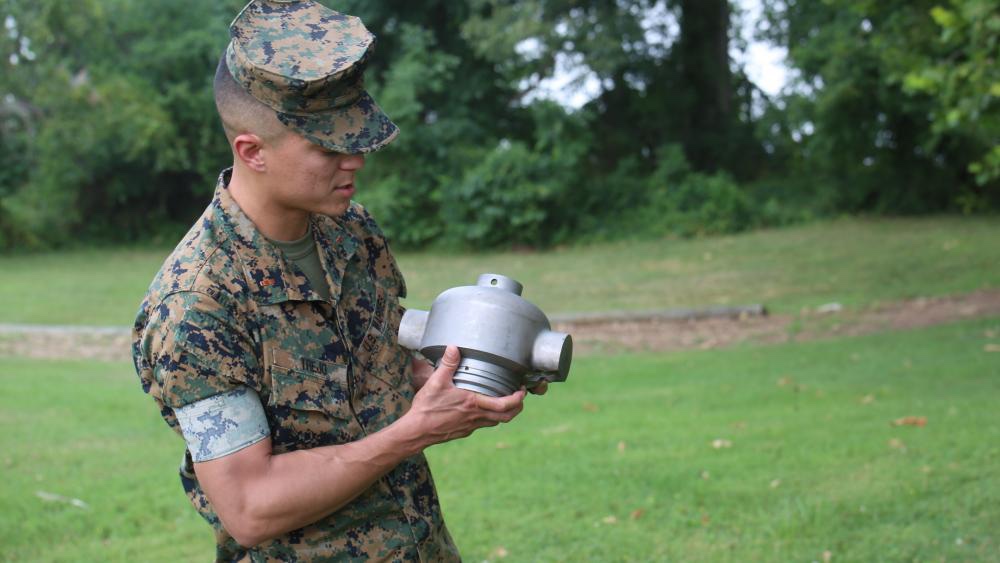QUANTICO, VA —
The Marine Corps continues to leverage additive manufacturing to benefit the warfighter.
This summer, the Program Manager for Ammunition at Marine Corps Systems Command 3D printed a headcap for a rocket motor used to detonate a M58 Mine Clearing Line Charge. The MICLIC is a rocket-projected explosive line charge that provides a demining capability for Marines.
“The process of 3D printing allows Marines to create a physical object from a digital design,” said CWO2 Justin Trejo, a project officer with PM Ammo at MCSC. “We essentially created a 3D-printed product and incorporated it into a highly explosive system.”

Marines use the MICLIC to clear paths through minefields and other obstacles on the battlefield. However, traditional manufacturing methods for creating the headcap can be both timely and costly, said Trejo. MCSC wanted to identify a more efficient method for producing the part.
PM Ammo found the answer to this dilemma in additive manufacturing.
In 2019, PM Ammo began exploring alternative solutions for manufacturing the headcap. After many hours of research as well as developing and testing a prototype headcap, the team collaborated with Naval Surface Warfare Center Corona Division to produce a 3D-printed version.
Earlier this year, NSWC Corona produced the 3D-printed, stainless steel solution. The next month, PM Ammo representatives assessed the 3D product during a test event at Yuma Proving Ground in Yuma, Arizona. The evaluation involved launching the rocket motor to detonate the mine-clearing line charge.
Trejo said the event went flawlessly.
“The rocket motor fired off just as intended and the line charge detonated as it is supposed to, which was a significant moment for us.”
-CWO2 Justin Trejo, Project officer with PM Ammo at MCSC
“In the future, we’d like to attempt to 3D print the headcap with its nozzles attached,” said Trejo.
He stressed the significance of the successful test event because it further confirmed the effectiveness of 3D printing, which has been growing in popularity within the Department of Defense.
Additive manufacturing provides Marines with a streamlined solution to meet their needs. In 2019, MCSC established its Advanced Manufacturing Operations Cell to serve as a 24/7 help desk for Marines who need assistance with 3D printing, and other sustainment and manufacturing solutions.
AMOC is available to answer questions, field requests for prints and fully vet any part that requires fabrication by a Marine organization. The team of skilled Marines and civilians has employed additive manufacturing to develop everything from innovative maintenance tools to a reinforced concrete bridge.
Caleb Hughes, an engineer with MCSC’s PM Ammo who supported the Yuma testing event, said 3D printing saves the Marine Corps time and money.
“The previous process of traditional manufacturing is outdated, while 3D printing is a more modern manufacturing technique,” said Hughes. “I truly believe 3D printing is the next generation of the Marine Corps.”
Trejo believes additive manufacturing aligns with Commandant of the Marine Corps Gen. David Berger’s vision in that 3D printing helps increase Marines’ battlefield efficiency. Trejo said the manufacturing method enables the warfighter to be “lighter and faster,” critical attributes when supporting various missions.
“We’re able to create equipment parts and other assets for whatever particular mission we’re engaged in,” said Trejo. “This 3D-printed headcap represents the Marine Corps going above and beyond to support our Marines.”
By Matt Gonzales, Marine Corps Systems Command

